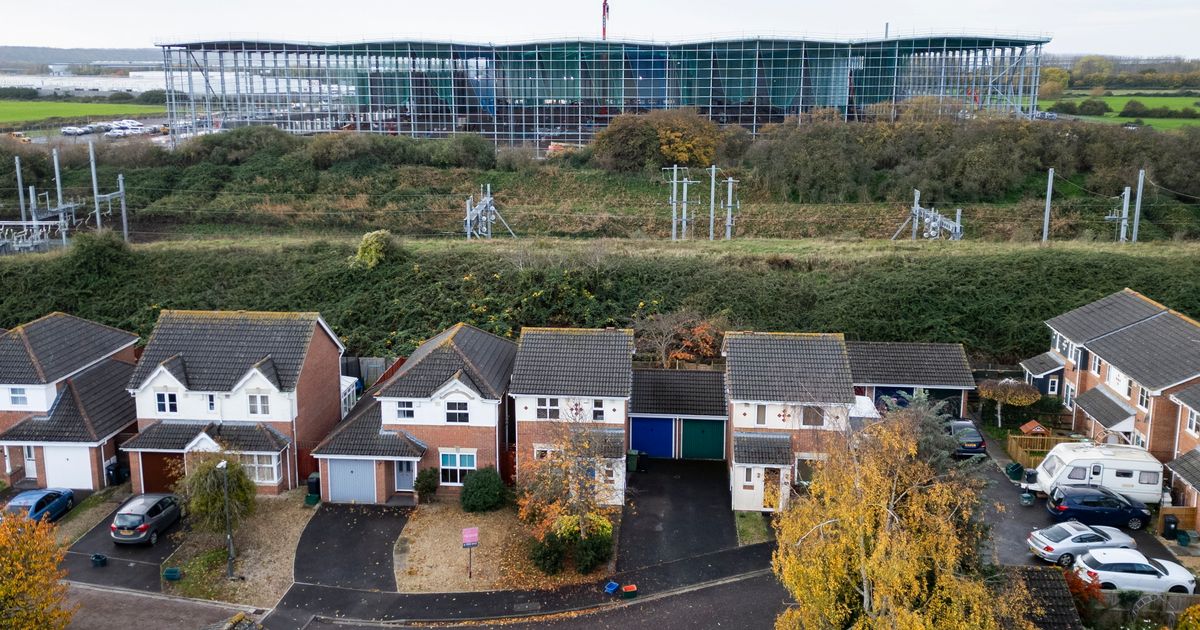They were not consulted because of historic planning consent
Filipa Gaspar, SWNS and Molly Seaman
10:19, 06 Nov 2025Updated 07:32, 07 Nov 2025
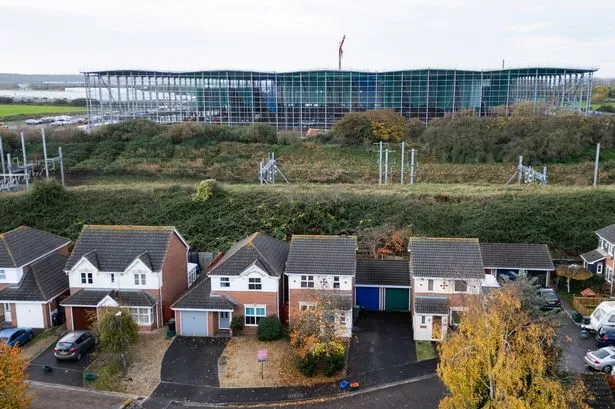 The new warehouse in Pilning(Image: SWNS)
The new warehouse in Pilning(Image: SWNS)
Residents are fuming after a massive warehouse dubbed a “mega shed” was built in a South Gloucestershire village without their consultation, using a controversial rule from 1957.
Locals in Pilning say the 500,000sqft building is a “monstrosity” which blights the area, has robbed them of views and even blocks the sun.
They say the ‘’stadium-size’’ 20m (65ft) high facility looks like a “large prison” or something from “War of the Worlds” and is also floodlit all night. People say they weren’t consulted over the building of the ”industrial distribution hub” because of an historic planning consent dating back to 1957.
The 1957 scheme was part of a post-war building initiative and allows developers to go ahead with an application in the area without fully consulting residents. It was originally designed 70 years ago to boost future expansion of chemical, storage, and distribution industries.
The ‘consent’ also means councillors are prohibited from taking into account many issues raised by residents. Locals claim estate agents have told them their homes have been significantly devalued, by up to ten per cent, by the building.
Some have dubbed it the ”giant green house”. Construction is ongoing and the building is expected to be finished in April, with neighbours left uncertain about its future use.
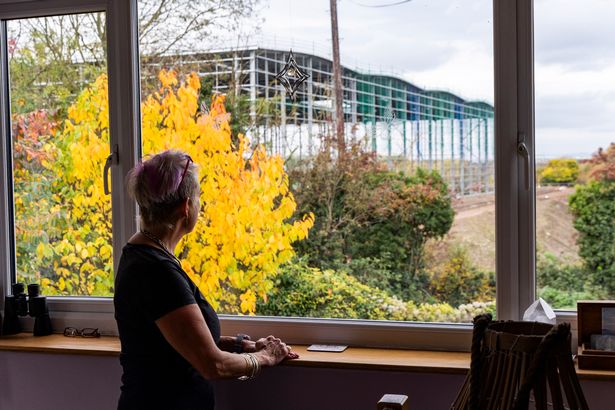 Local resident Simone Harrison Kelly(Image: SWNS)
Local resident Simone Harrison Kelly(Image: SWNS)
Simone Harrison, 55, and husband Ricky Harrison, 51, say for 13 years all they could see in that direction was wildlife and animals like deer and rabbits.
But now when they open their windows all they see is a massive warehouse. Simone said: “I feel so upset. We have never drawn our curtains. Now you feel like you have no privacy.
“It is an effing monstrosity. It has certainly changed the way I feel about the area. If it is going to be a distribution hub there are going to be lorries every night.
“I might as well move out and live in the city again if this is going to be fully operational.
“When they started the piling work the whole house was shaking and a lot of dust. They told they were going to clean our house and cars and they didn’t.”
Ricky said: “I understand we need progression but there has been little thought about the houses and who lives here.
“It is not planned by someone who lives here. They just plonked it here. What is it going to look like? Is it going to look like a stadium?
“When it was being built it was like War of the Worlds – it just kept getting bigger and bigger.”
Sue Jones, 67, a retired army veteran, went on holiday and when she came back after two weeks the “monster shed” had appeared.
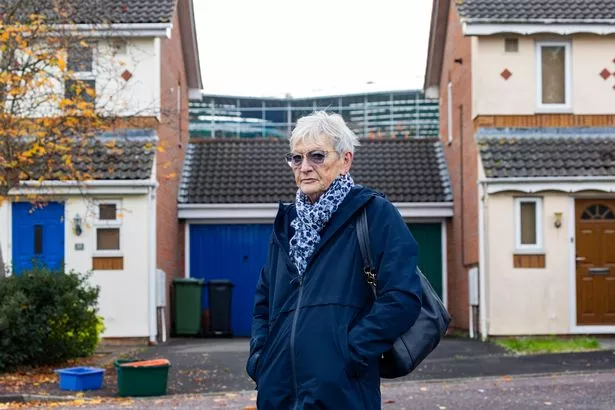 Local resident Sue Jones(Image: SWNS)
Local resident Sue Jones(Image: SWNS)
“I was disgusted when I saw it,” she said. “They managed to get it so close to the houses.
“And what about the flood plan? Where is all the water going to go?
“When it is completed it is going to be like living next to a large prison.
“We didn’t get any correspondence from the developers until last week we got a newsletter number six out of six. Where did the other correspondence go?”
Sue said she doesn’t know what the industrial unit is meant to be but is afraid there are going to be lorries in and out of the village day and night.
She added: “They go on about this creating jobs.
”But this will create a few minimum wage jobs and the rest is automated. There are thousands of warehouse jobs around here.
“It is a monster. It looks like a giant green house.”
Collin, 75 and his wife Marilyn Cheetham, 73 can see the warehouse from a room upstairs in their home. Collin said: “I see it when we are upstairs and it is right in our faces.
“If they had stuck to their first plans that would have been fine.
“We have got to accept progress. What we are opposed to is the size of it. It all happened in 10 weeks.
“We’re going to have to put up with it for the rest of our lives. You can see it from miles around.”
Couple Christine, 68, and Paul Selby, 71 , fear it will be a 24/7 operation.
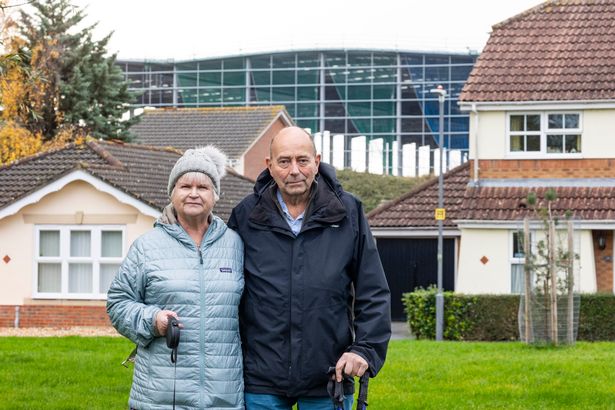 Local residents Christine and Paul Selby(Image: SWNS)
Local residents Christine and Paul Selby(Image: SWNS)
Christine said: ”I feel annoyed and powerless to say the least. It has destroyed the area.
“They are doing this relying on the old planning permission. They have not envisioned flooding and the consequences.
Paul added: “It is going to alter the area completely. There has been no consideration given and no questions asked to residents.”
South Gloucestershire Council said it had ‘limited’ control over the plans because of planning permission for the Severnside area granted in 1957.
Claire Young MP, Liberal Democrat for Pilning and Yate, has raised the issue in the Commons.
She said: “Historic consents need to be looked at and we need legislation to introduce modern conditions on them, so we don’t have this situation where people’s very reasonable concerns can’t be taken into consideration.
“In the early 90s the government regularized this for quarries but they didn’t fix ones like this (Severnside) consent.
”Now I’m asking them to finish the job and that’s why I’m calling for a debate to directly ask ministers.”
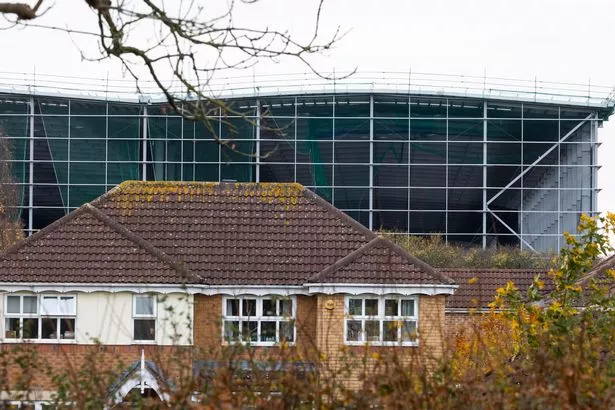 The new Pilning warehouse behind village homes (Image: SWNS)
The new Pilning warehouse behind village homes (Image: SWNS)
In a statement, South Gloucestershire Council explained they had limited powers to halt the project.
A spokesperson for South Gloucestershire Council said: “Much of the new development at Severnside is governed by a planning permission granted in 1957, pre-dating both South Gloucestershire Council and probably the arrival of many local residents in Easter Compton.
”This permission gives wide ranging powers for development with limited remaining control for the council to exercise.”
The “1957/58 Severnside Consent” refers to significant, large-area planning permissions granted to chemical industries for industrial development in the Severnside area of South Gloucestershire, UK.
The permissions were granted to facilitate future industrial expansion over a large area of land – approximately 650 to over 1000 hectares.
They are “extant” or still valid today, meaning that much of the land benefits from this existing planning permission for uses such as industrial, storage, and distribution.
It allows development to proceed without necessarily requiring the same level of investment in strategic flood or ecological mitigation that new permissions would need.
The rule has created some planning and environmental challenges for local authorities. A Government spokesperson said: “We’re taking decisive action to update the planning system and get Britain building, while ensuring communities are engaged with developers’ plans.
“Councils are ultimately responsible for reviewing old permissions if the development is no longer suitable and deciding whether action is necessary.”
